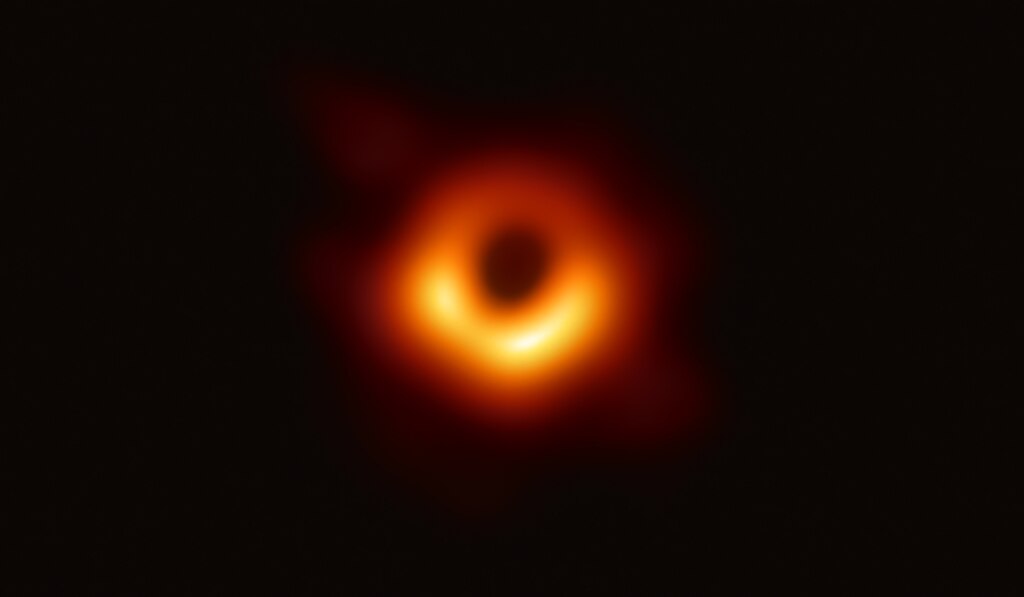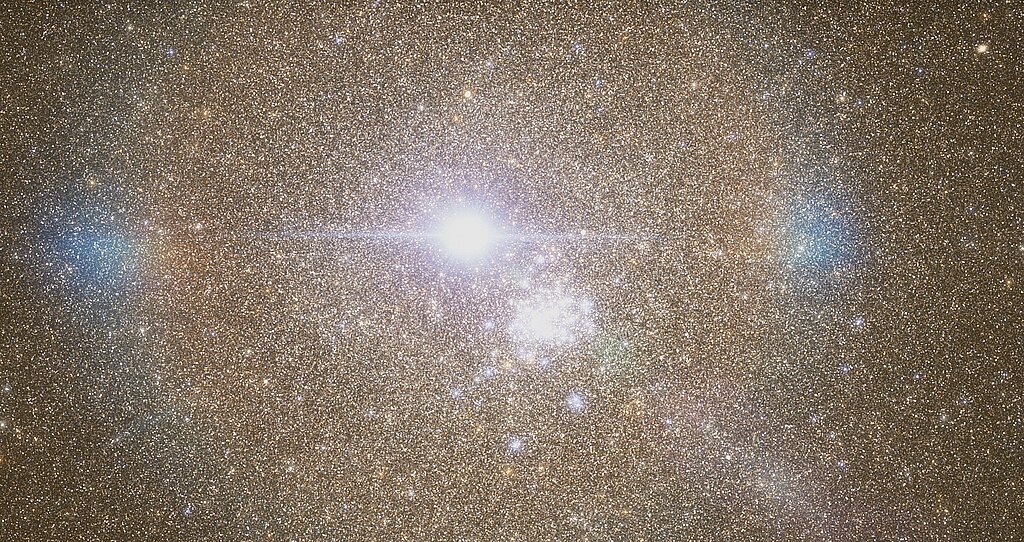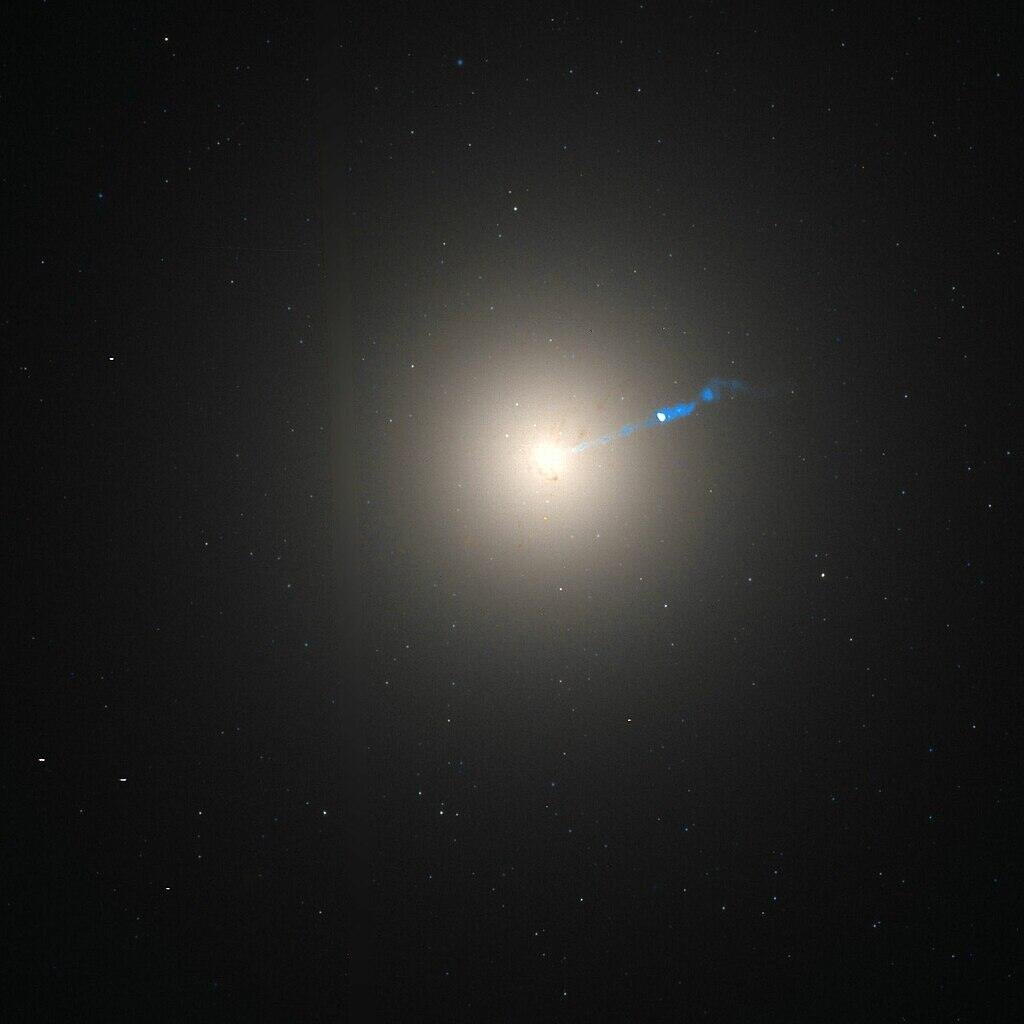Celestial Wonders: Exploring the Galaxy Messier 87
Galaxy Messier 87, commonly referred to as M87 or Virgo A or NGC4486; stands as a cosmic enigma within the tapestry of the universe. Situated over 55 million light-years away from Earth, M87 captivates astronomers and astrophysics enthusiasts alike with its intriguing features and historical significance. In this article, we will embark on a journey to explore the wonders of M87, shedding light on its peculiarities and groundbreaking discoveries.
55 million light-years is the distance that light travels in 55 million years. So, if something is 55 million light-years away from Earth, it means that the light we see from that object today actually left it 55 million years ago.
Discovery and Identification
M87 was first discovered by the French astronomer Charles Messier in the late 18th century. Initially cataloged as a nebulous object, it wasn’t until the 20th century that advancements in astronomical technology revealed its true nature as a giant elliptical galaxy.

Scientists used a network of eight telescopes called the Event Horizon Telescope to capture an image of a black hole in the Messier 87 galaxy. Despite not being physically linked, the telescopes synchronized their data using precise atomic clocks. This data, totaling around 350 terabytes per day, was processed using advanced computational tools. The resulting image is an average of three different methods and shows the shadow of the black hole. This shadow is about 2.5 times smaller than the actual black hole and is roughly 40 billion kilometers wide. Event Horizon Telescope, CC BY 4.0, via Wikimedia Commons
Physical Characteristics
- Size and Mass:
- M87 is one of the largest galaxies known to humanity, spanning approximately 120,000 light-years in diameter. It harbors a staggering mass equivalent to trillions of suns.
- Jet and Supermassive Black Hole:
- At the heart of M87 lies a supermassive black hole, an astronomical entity with a mass billions of times greater than that of our Sun. This black hole is known for its powerful and distinctive jet, which extends for thousands of light-years into space.
Historical Breakthrough: The First Black Hole Image
In a monumental achievement in astrophysics, the Event Horizon Telescope (EHT) collaboration unveiled the first-ever image of a black hole on April 10, 2019. The subject of this historic image was none other than the supermassive black hole residing in the heart of M87. This groundbreaking achievement provided empirical evidence for the existence of black holes and offered valuable insights into their mysterious nature.
Galactic Neighborhood and Virgo Cluster
M87 is a prominent member of the Virgo Cluster, a collection of galaxies bound together by gravity. This cluster is one of the closest galaxy clusters to our own Local Group, which includes the Milky Way.
Astronomical Significance and Research concerning Galaxy Messier 87
M87’s proximity and distinctive features have made it a subject of extensive astronomical research. Scientists study this galaxy to gain insights into various cosmic phenomena, including the behavior of supermassive black holes, the dynamics of galactic jets, and the formation and evolution of giant elliptical galaxies.
Nearest Galaxy and the distance from Milky Way (our galaxy)?
Unraveling the Mysteries of the Rotating Black Hole in M87 Galaxy
Black holes, those mysterious cosmic objects where gravity is so strong that even light can’t escape, continue to captivate our curiosity. One such intriguing black hole resides at the heart of the M87 galaxy, situated a staggering 55 million light years away from our home planet. This colossal black hole, 6.5 billion times heavier than our Sun, has been the focus of intense study for two decades, culminating in a groundbreaking revelation: it’s rotating!
A Galactic Puzzle:
Imagine a whirlpool of matter encircling a black hole, akin to water spiraling down a drain. This swirling material doesn’t fall directly into the black hole due to its rotational motion, creating a flat, rotating disk. While we understand this concept, the intricate details of this accretion disk remain a puzzle.
A Revolutionary Discovery:
The international research team, led by scientist Yuzhu Cui and supported by the Institute of Astrophysics of Andalusia, utilized two decades’ worth of data from the Event Horizon Telescope network to unravel this cosmic enigma. Their findings not only confirmed the rotation of this colossal black hole but also unveiled a surprising behavior: the emission of a plasma jet that oscillates at an angle of about 10 degrees. This oscillation follows an 11-year cycle, aligning with Albert Einstein’s theory of relativity.

The Core of Messier 87. This picture shows what scientists think the center of M87 (also known as Virgo A) might look like. The bright spot is the black hole in the galaxy. On the bottom right side of the black hole, you can see stars that are going around it. Wikihelp7586, CC BY-SA 4.0, via Wikimedia Commons
Beyond M87:
M87 serves as a cosmic laboratory, offering valuable insights into the behavior of supermassive black holes. While this discovery is monumental, it also raises new questions. Other black holes may exhibit similar behaviors, but detecting them poses greater challenges due to their subtler variations over longer periods.
The Quest for Cosmic Understanding:
With each revelation, such as the rotational motion of M87’s black hole, we embark on a new chapter in our pursuit to comprehend the universe. While the ultimate goal of understanding our Universe may seem daunting, every discovery brings us closer to unraveling its grand mysteries. The enigma of black holes continues to inspire astronomers worldwide, reminding us of the boundless wonders awaiting our exploration.
Astronomical coordinate systems: horizontal, equatorial, ecliptic, galactic and supergalactic
Conclusion: A Celestial Marvel in Our Cosmic Backyard
Galaxy M87, with its colossal proportions and captivating mysteries, continues to be a focal point of astronomical inquiry. Its supermassive black hole and the historic EHT image have propelled M87 into the spotlight of astrophysical research. As we continue to explore the depths of the universe, M87 stands as a testament to the awe-inspiring wonders that await our discovery.
Sources: PinterPandai, Britannica, NASA
Photo credit: en:NASA, en:STScI, en:WikiSky, Public domain, via Wikimedia Commons



